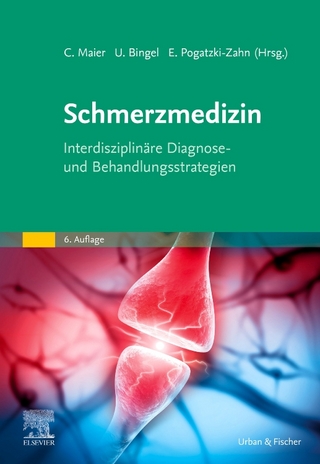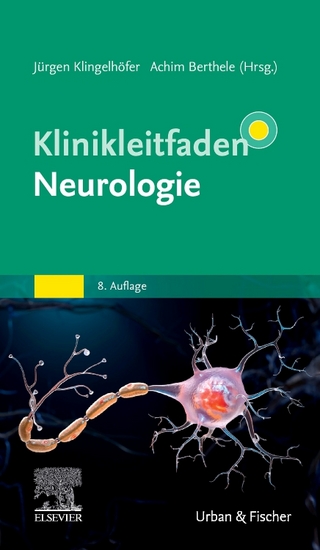
Photobiomodulation in the Brain
Academic Press Inc (Verlag)
978-0-12-815305-5 (ISBN)
Michael R Hamblin Ph.D. is a Principal Investigator at the Wellman Center for Photomedicine at Massachusetts General Hospital, an Associate Professor of Dermatology at Harvard Medical School and is a member of the affiliated faculty of the Harvard-MIT Division of Health Science and Technology. He was trained as a synthetic organic chemist and received his PhD from Trent University in England. His research interests lie in the areas of photodynamic therapy (PDT) for infections, cancer, and heart disease and in low-level light therapy (LLLT) for wound healing, arthritis, traumatic brain injury and hair-regrowth. He directs a laboratory of around a sixteen post-doctoral fellows, visiting scientists and graduate students. His research program is supported by NIH, CDMRP, USAFOSR and CIMIT among other funding agencies. He has published 252 peer-reviewed articles, over 150 conference proceedings, book chapters and International abstracts and holds 8 patents. He is Associate Editor for 7 journals, on the editorial board of a further 12 journals and serves on NIH Study Sections. For the past 9 years Dr Hamblin has chaired an annual conference at SPIE Photonics West entitled "Mechanisms for low level light therapy" and he has edited the 9 proceedings volumes together with four other major textbooks on PDT and photomedicine. He has several other book projects in progress at various stages of completion. In 2011 Dr Hamblin was honored by election as a Fellow of SPIE. Dr. Huang is an instructor at Harvard University. She completed her dermatology residency at Sun Yat-Sen University in Guangzhou, China and her postdoctoral work at the Wellman Center for Photomedicine in Massachusetts General Hospital and Harvard Medical School. She has years of experience in drug screening in vitro and in vivo cancer therapies and maintains research in clinical dermatology.
Part I: Basic considerations and in vitro 1. Photobiomodulation therapy and the brain: an innovative tool for therapy and discovery Praveen R. Arany 2. Theoretical neuroscience Marcelo Victor Pires de Sousa, Marucia Chacur, Daniel Oliveira Martins and Carlo Rondinoni 3. Photobiomodulation of cultured primary neurons: role of cytochrome c oxidase Margaret Wong-Riley and Huan Ling Liang 4. Photobiomodulation on cultured cortical neurons Ying-Ying Huang and Michael R. Hamblin 5. Safety and penetration of light into the brain Erica B Wang, Ramanjot Kaur, Manuel Fierro, Evan Austin, Linda Ramball Jones and Jared Jagdeo 6. Near-infrared photonic energy penetration—principles and practice Theodore A. Henderson and Larry D. Morries 7. Light sources and dosimetry for the brain and whole body James D. Carroll 8. Mechanisms of photobiomodulation in the brain Michael R. Hamblin
Part II: Studies in animal models 9. Transcranial photobiomodulation for stroke in animal models Luis De Taboada and Michael R. Hamblin 10. Photobiomodulation in photothrombotic stroke Lorelei Tucker, Luodan Yang, Yong Li and Quanguang Zhang 11. Remote photobiomodulation as a neuroprotective intervention—harnessing the indirect effects of photobiomodulation Luke Gordon, Boaz Kim, Claudia Petrucco, Ji Yeon Kim, Patrick Benson, Jonathan Stone and Daniel M. Johnstone 12. Photobiomodulation for traumatic brain injury in mouse models Michael R. Hamblin 13. Photobiomodulation and mitochondria for traumatic brain injury in mouse models Mei X. Wu and Michael R. Hamblin 14. Photobiomodulation for depression in animal models Farzad Salehpour, Javad Mahmoudi, Saeed Sadigh-Eteghad and Paolo Cassano 15. Transcranial photobiomodulation treats Alzheimer’s disease in amyloid-ß protein precursor transgenic mice Luis De Taboada and Michael R. Hamblin 16. Low-level laser therapy to the bone marrow: a new therapeutic approach to neurodegenerative diseases Amir Oron and Uri Oron 17. The experimental evidence for photobiomodulation-induced cellular and behavioral changes in animal models of Parkinson’s disease: a template for translation to patients Nabil El Massri and John Mitrofanis 18. Effects of near-infrared low-level laser stimulation on neuronal excitability Ljubica M. Konstantinovic and Sasa R. Filipovic 19. Photobiomodulation for multiple sclerosis in animal models M.A. Tolentino and J.A. Lyons 20. Hepatic encephalopathy and photobiomodulation: experimental models and clinical features Natalia Arias, Juan Diaz Gonza´lez, Alberto Martin Pernia and Jorge L Arias 21. Photobiomodulation in animal models of retinal injury and disease Janis T. Eells 22. Transcranial photobiomodulation therapy for pain: animal models, dosimetry, mechanisms, perspectives Marcelo Victor Pires de Sousa, Nathali Cordeiro Pinto and Elisabeth Mateus Yoshimura
Part III: Cinical studies 23. The challenge of effectively translating transcranial near-infrared laser therapy to treat acute ischemic stroke Paul A. Lapchak 24. Effects of photobiomodulation on traumatic brain injury: proposed clinical assessment Sherry Fox and Victoria Campbell 25. Transcranial, red/near-infrared light-emitting diode therapy for chronic traumatic brain injury and poststroke aphasia: clinical studies Margaret A. Naeser, Paula I. Martin, Michael D. Ho, Maxine H. Krengel, Yelena Bogdanova, Jeffrey A. Knight, Andrea Fedoruk, Michael R. Hamblin and Bang-Bon Koo 26. Photobiomodulation as a potential therapeutic strategy for improving cognitive and functional outcomes in traumatic brain injury Thomas J. Covey, David W. Shucard, Melissa Meynadasy, Thomas Mang and Praveen R. Arany 27. Advanced neuroimaging methods for assessment of low-level light therapy Suk-tak Chan, Maria Gabriela Longo, Eva-Maria Ratai and Rajiv Gupta 28. Treatment of traumatic brain injury with near-infrared light Larry D. Morries and Theodore A. Henderson 29. Photobiomodulation: a novel approach to treating Alzheimer’s disease Lew Lim, Genane Loheswaran, Reza Zomorrodi, Anita Saltmarche and Linda Chao 30. Electroencephalography as the diagnostic adjunct to transcranial photobiomodulation Reza Zomorrodi, Genane Loheswaran and Lew Lim 31. Can photobiomodulation enhance brain function in older adults? Agnes S. Chan, Michael K. Yeung and Tsz L. Lee 32. Noninvasive neurotherapeutic treatment of neurodegeneration: integrating photobiomodulation and neurofeedback training Marvin H. Berman, Trent Nichols, Jason Huang and Damir Nizamutdinov 33. Transcranial photobiomodulation therapy: observations from four movement disorder patients Catherine Hamilton, David Hamilton, Frank Nicklason and John Mitrofanis 34. Cerebral blood flow in the elderly: impact of photobiomodulation Afonso Shiguemi Inoue Salgado, Francisco Jose´ Cidral-Filho, Daniel Fernandes Martins, Ivo I. Kerppers and Rodolfo Borges Parreira 35. Transcranial photobiomodulation for major depressive and anxiety disorders and for posttraumatic stress disorder Marco Antonio Caldieraro and Paolo Cassano 36. Action at a distance: laser acupuncture and the brain Nicholas Alexander Wise 37. Signature wounds of war: a case study George Louis Lindenfeld and George Rozelle 38. Transcatheter intracerebral photobiomodulation in degenerative brain disorders: clinical studies (Part 1) Ivan V. Maksimovich 39. Transcatheter intracerebral photobiomodulation in ischemic brain disorders: clinical studies (Part 2) Ivan V. Maksimovich 40. Russian low level laser therapy techniques for brain disorders Sergey V. Moskvin and Andrey V. Kochetkov 41. Laser treatment of central nervous system injuries: an update and prospects L. Longo 42. Photobiomodulation treatment for brain disorders: posttraumatic stress disorder (PTSD) and dementia Randy Lamartiniere, Rhett Bergeron, Ronald Aung-Din, Matthew Bennett, William Stephan and Louis Banas 43. What we don’t know and what the future holds Michael R. Hamblin
| Erscheinungsdatum | 19.07.2019 |
|---|---|
| Verlagsort | San Diego |
| Sprache | englisch |
| Maße | 216 x 276 mm |
| Gewicht | 1770 g |
| Themenwelt | Medizin / Pharmazie ► Medizinische Fachgebiete ► Neurologie |
| Naturwissenschaften | |
| ISBN-10 | 0-12-815305-9 / 0128153059 |
| ISBN-13 | 978-0-12-815305-5 / 9780128153055 |
| Zustand | Neuware |
| Haben Sie eine Frage zum Produkt? |
aus dem Bereich


